An Innovative Diagnostic Film for Structural Health Monitoring of Metallic and Composite Structures
Abstract
:1. Introduction
2. Development of the Diagnostic Film
2.1. Printed Circuit Characterization
2.1.1. Electrical Resistivity Measurements
2.1.2. Surface Morphology
2.1.3. Weight Assessment
3. Integrity and Reliability Assessment of the Diagnostic Film
3.1. Mechanical Fatigue Testing
3.2. Electrical Fatigue Testing
3.3. Effect of Printed Wire Length
3.4. Temperature and Humidity Environmental Testing
4. Diagnostic Film Applications
5. Conclusions
- Is flexible, so that it can adapt to any surface.
- Can be surface-mounted as well as embedded in composites.
- Is repairable, so it can be easily removed from the surface of the structure and replaced in case of failed sensors.
- Has an adaptable design: the wires can be of any shape (curved or straight), so it is applicable to any complex geometries and can be readily scaled up.
- Has low weight (compared to conventional wired solution, 70% reduction in weight can be achieved).
- Has a uniform and repeatable bonding quality.
- Exhibits reliable functionality under operational conditions of aircraft.
Author Contributions
Funding
Acknowledgments
Conflicts of Interest
References
- Park, G.; Farrar, C.R.; Scalea, F.L.D.; Coccia, S. Performance assessment and validation of piezoelectric active-sensors in structural health monitoring. Smart Mater. Struct. 2006, 15, 1673–1683. [Google Scholar] [CrossRef]
- Annamdas, V.G.M.; Soh, C.K. Load monitoring using a calibrated piezo diaphragm based impedance strain sensor and wireless sensor network in real time. Smart Mater. Struct. 2017, 26, 045036. [Google Scholar] [CrossRef]
- Kahandawa, G.C.; Epaarachchi, J.; Wang, H.; Lau, K.T. Use of FBG Sensors for SHM in Aerospace Structures. Photonic Sens. 2012, 2, 203–214. [Google Scholar] [CrossRef] [Green Version]
- Garcia, I.; Zubia, J.; Durana, G.; Aldabaldetreku, G.; Illarramendi, M.A.; Villatoro, J. Optical Fiber Sensors for Aircraft Structural Health Monitoring. Sensors 2015, 15, 15494–15519. [Google Scholar] [CrossRef] [PubMed] [Green Version]
- Mallardo, V.; Aliabadi, M.; Reddy, A.L.; Charles, S.; Priya, C.B.; Rao, G.R.; Gopalakrishnan, N.; Rao, A.R.M.; Afshar, R.; Berto, F. Optimal sensor placement for structural, damage and impact identification: A review. SDHM Struct. Durab. Health Monit. 2013, 9, 287–323. [Google Scholar]
- Mallardo, V.; Aliabadi, M.; Khodaei, Z.S. Optimal sensor positioning for impact localization in smart composite panels. J. Intell. Mater. Syst. Struct. 2012, 24, 559–573. [Google Scholar] [CrossRef]
- Salmanpour, M.; Khodaei, Z.S.; Aliabadi, M. Transducer placement optimisation scheme for a delay and sum damage detection algorithm. Struct. Control Health Monit. 2017, 24, e1898. [Google Scholar] [CrossRef]
- Thiene, M.; Khodaei, Z.S.; Aliabadi, M. Optimal sensor placement for maximum area coverage (MAC) for damage localization in composite structures. Smart Mater. Struct. 2016, 25, 095037. [Google Scholar] [CrossRef]
- Mallardo, V.; Khodaei, Z.S.; Aliabadi, F.M. A Bayesian Approach for Sensor Optimisation in Impact Identification. Materials 2016, 9, 946. [Google Scholar] [CrossRef] [PubMed]
- R.S.C. (SC-135). DO-160C Environmental Conditions and Test Procedures for Airborne Equipment; Radio Technical Commission for Aeronautics (RTCA): Washington, DC, USA, 1989. [Google Scholar]
- Sharif-Khodaei, Z.; Ghajari, M.; Aliabadi, M. Determination of impact location on composite stiffened panels. Smart Mater. Struct. 2012, 21, 105026. [Google Scholar] [CrossRef]
- Ghajari, M.; Sharif-Khodaei, Z.; Aliabadi, M.; Apicella, A. Identification of impact force for smart composite stiffened panels. Smart Mater. Struct. 2013, 22, 085014. [Google Scholar] [CrossRef] [Green Version]
- Morse, L.; Khodaei, Z.S.; Aliabadi, M. Reliability based impact localization in composite panels using Bayesian updating and the Kalman filter. Mec. Syst. Signal Process. 2018, 99, 107–128. [Google Scholar] [CrossRef] [Green Version]
- Sharif-Khodaei, Z.; Aliabadi, M. Assessment of delay-and-sum algorithms for damage detection in aluminium and composite plates. Smart Mater. Struct. 2014, 23, 075007. [Google Scholar] [CrossRef] [Green Version]
- Khodaei, Z.S.; Aliabadi, M. A Multi-Level Decision Fusion Strategy for Condition Based Maintenance of Composite Structures. Materials 2016, 9, 790. [Google Scholar] [CrossRef] [PubMed]
- Salmanpour, M.S.; Khodaei, Z.S.; Aliabadi, M.H. Instantaneous Baseline Damage Localization Using Sensor Mapping. IEEE Sens. J. 2017, 17, 295–301. [Google Scholar] [CrossRef]
- Dziendzikowski, M.; Niedbala, P.; Kurnyta, A.; Kowalczyk, K.; Dragan, K. Structural Health Monitoring of a Composite Panel Based on PZT Sensors and a Transfer Impedance Framework. Sensors 2018, 18, 1521. [Google Scholar] [CrossRef] [PubMed]
- Cawley, P. Structural health monitoring: Closing the gap between research and industrial deployment. Int. J. Struct. Health Monit. 2018. [Google Scholar] [CrossRef]
- Salmanpour, M.S.; Khodaei, Z.S.; Aliabadi, M.H. Airborne Transducer Integrity under Operational Environment for Structural Health Monitoring. Sensors 2016, 16, 2110. [Google Scholar] [CrossRef] [PubMed]
- Overly, T.G.; Gyuhae, P.; Farinholt, K.M.; Farrar, C.R. Piezoelectric Active-Sensor Diagnostics and Validation Using Instantaneous Baseline Data. IEEE Sens. J. 2009, 9, 1414–1421. [Google Scholar] [CrossRef]
- Friswell, M.I.; Inman, D.J. Sensor Validation for Smart Structures. J. Intell. Mater. Syst. Struct. 2016, 10, 973–982. [Google Scholar] [CrossRef]
- Hoth, C.N.; Choulis, S.A.; Schilinsky, P.; Brabec, C.J. High Photovoltaic Performance of Inkjet Printed Polymer:Fullerene Blends. Adv. Mater. 2007, 19, 3973–3978. [Google Scholar] [CrossRef]
- Zheng, Y.; He, Z.; Gao, Y.; Liu, J. Direct Desktop Printed-Circuits-on-Paper Flexible Electronics. Sci. Rep. 2013, 3, 1786. [Google Scholar] [CrossRef]
- Dijksman, J.F.; Duineveld, P.C.; Hack, M.J.J.; Pierik, A.; Rensen, J.; Rubingh, J.E.; Schram, I.; Vernhout, M.M. Precision ink jet printing of polymer light emitting displays. J. Mater. Chem. 2007, 17, 511–522. [Google Scholar] [CrossRef]
- Lee, G.-Y.; Kim, M.-S.; Yoon, H.-S.; Yang, J.; Ihn, J.-B.; Ahn, S.-H. Direct Printing of Strain Sensors via Nanoparticle Printer for the Applications to Composite Structural Health Monitoring. Procedia CIRP 2017, 66, 238–242. [Google Scholar] [CrossRef]
- Zhang, Y.; Anderson, N.; Bland, S.; Nutt, S.; Jursich, G.; Joshi, S. All-printed strain sensors: Building blocks of the aircraft structural health monitoring system. Sens. Actuators A Phys. 2017, 253, 165–172. [Google Scholar] [CrossRef]
- Yin, F.; Ye, D.; Zhu, C.; Qiu, L.; Huang, Y. Stretchable Highly Durable Ternary Nanocomposite Strain Sensor for Structural Health Monitoring of Flexible Aircraft. Sensors 2017, 17, 2677. [Google Scholar] [CrossRef] [PubMed]
- Cummins, G.; Desmulliez, M.P.Y. Inkjet printing of conductive materials: A review. Circuit World 2012, 38, 193–213. [Google Scholar] [CrossRef]
- Schmidt, D.; Kolbe, A.; Kaps, R.; Wierach, P.; Linke, S.; Steeger, S.; von Dungern, F.; Tauchner, J.; Breu, C.; Newman, B. Development of a Door Surround Structure with Integrated Structural Health Monitoring System; Springer International Publishing: Cham, Switzerland, 2016; pp. 935–945. [Google Scholar]
- Lin, M.; Qing, X.; Kumar, A.; Beard, S.J. SMART Layer and SMART Suitcase for structural health monitoring applications. Smart Struct. Mater. 2001 Ind. Commer. Appl. Smart Struct. Technol. 2001, 4332, 98–106. [Google Scholar] [Green Version]
- Le, T.; Lin, Z.; Vyas, R.; Lakafosis, V.; Yang, L.; Traille, A.; Tentzeris, M.M.; Wong, C.-P. Inkjet Printing of Radio Frequency Electronics: Design Methodologies and Application of Novel Nanotechnologies. J. Electron. Packag. 2013, 135, 011007–011007-14. [Google Scholar] [CrossRef]
- Perelaer, B.J.; de Laat, A.W.M.; Hendriks, C.E.; Schubert, U.S. Inkjet-printed silver tracks: Low temperature curing and thermal stability investigation. J. Mater. Chem. 2008, 18, 3209. [Google Scholar] [CrossRef]
- Yarin, A.L.; Szczech, J.B.; Megaridis, C.M.; Zhang, J.; Gamota, D.R. Lines of dense nanoparticle colloidal suspensions evaporating on a flat surface: Formation of non-uniform dried deposits. J. Colloid Interface Sci. 2006, 294, 343–354. [Google Scholar] [CrossRef] [PubMed]
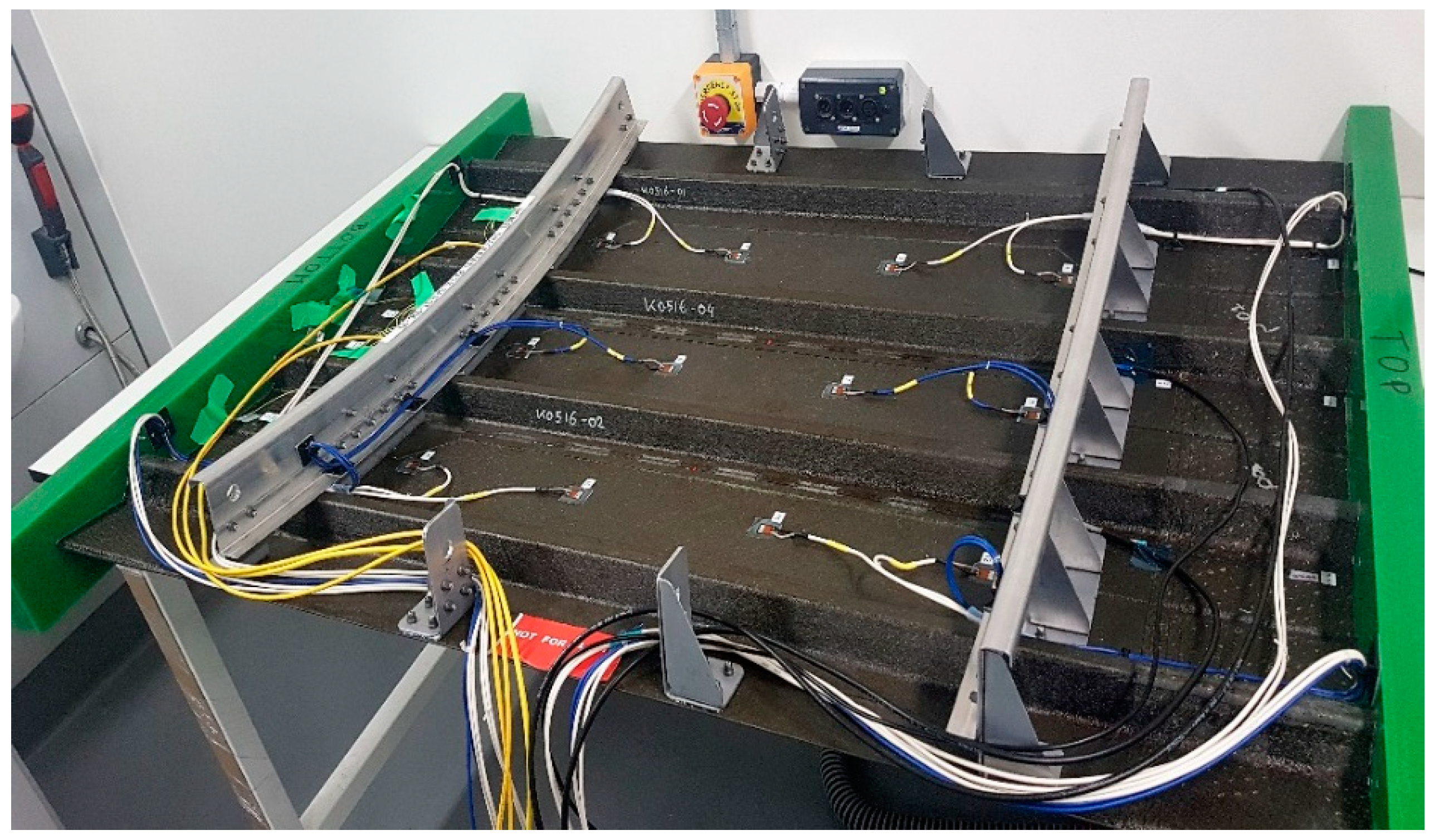


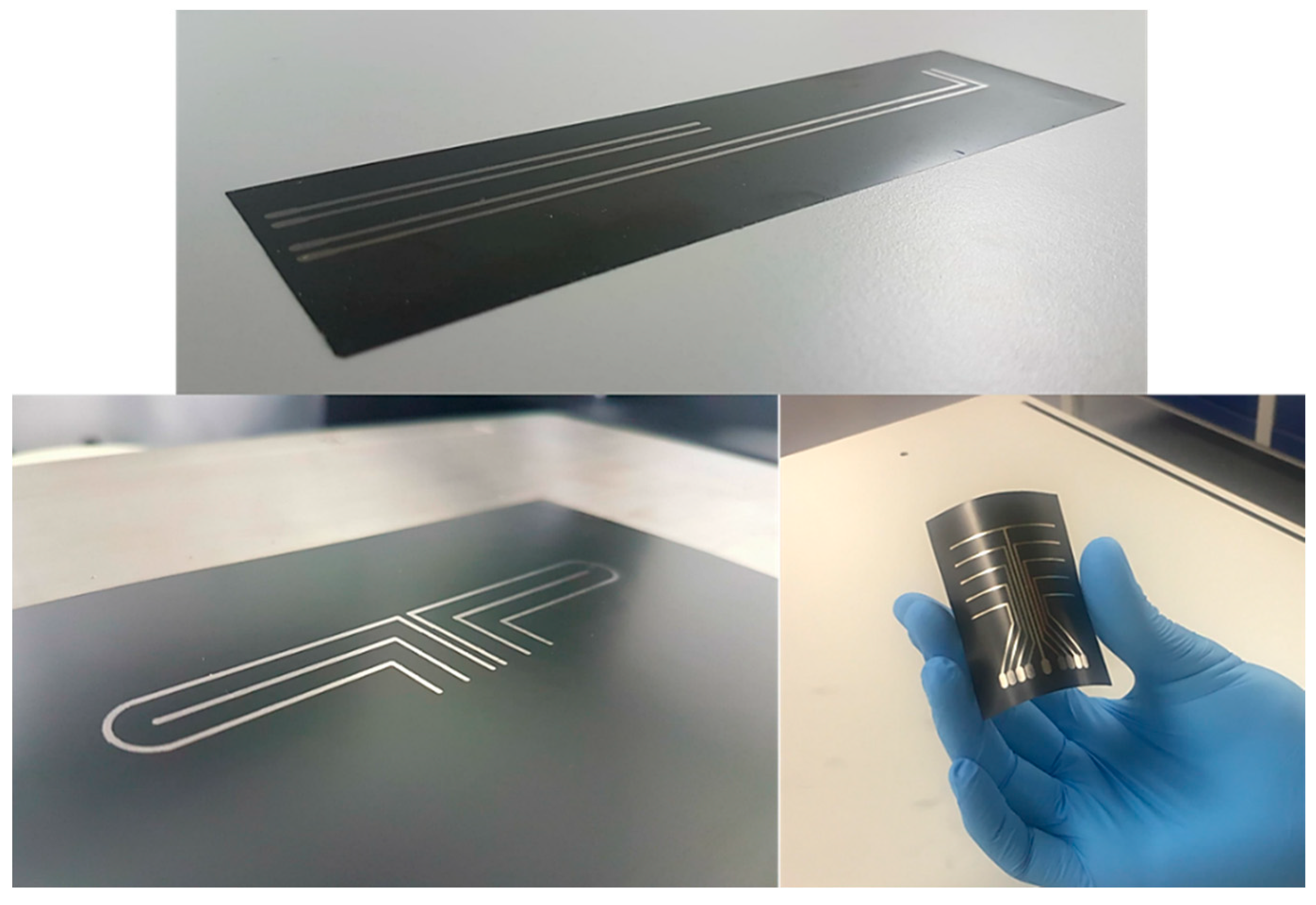
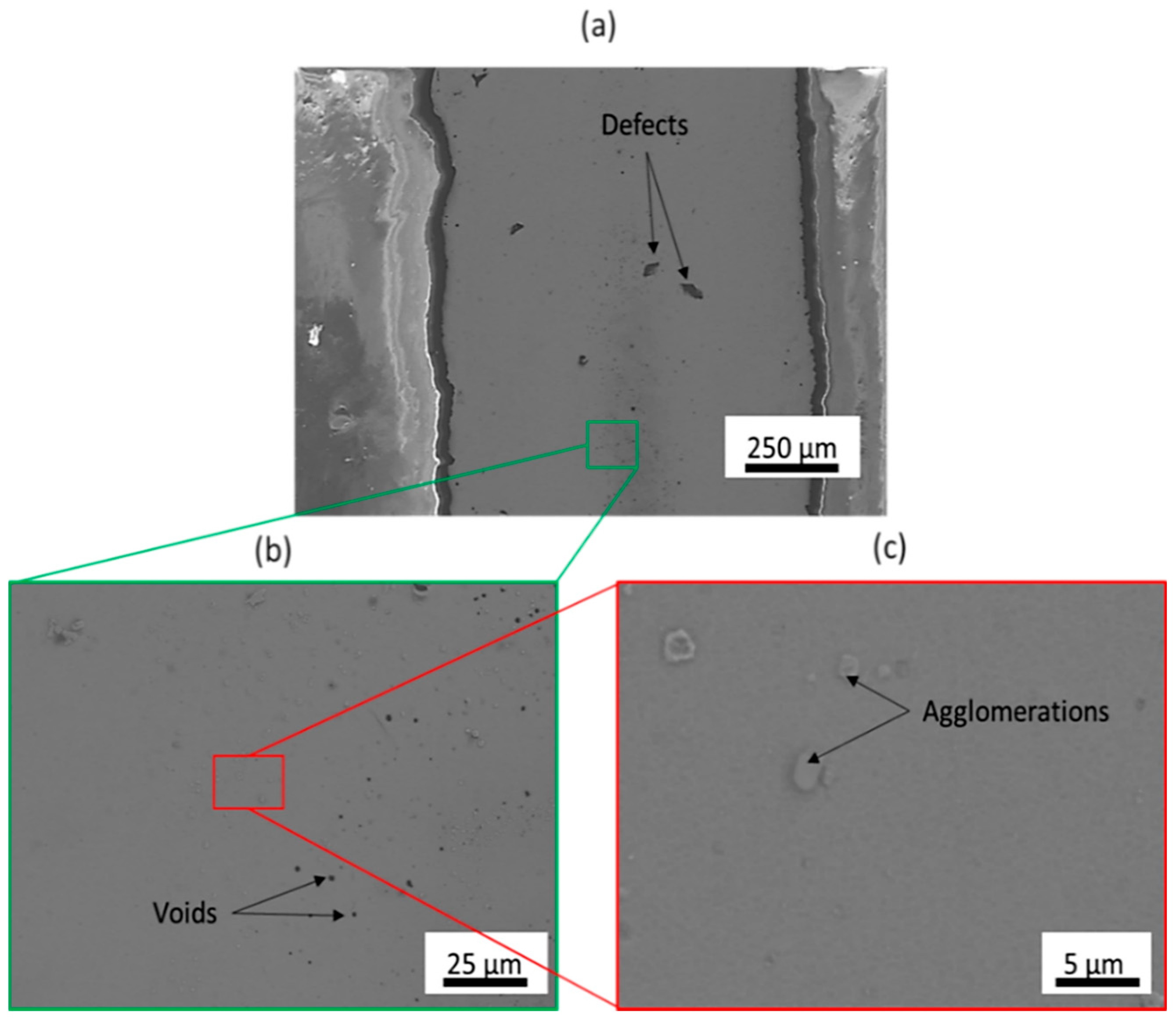






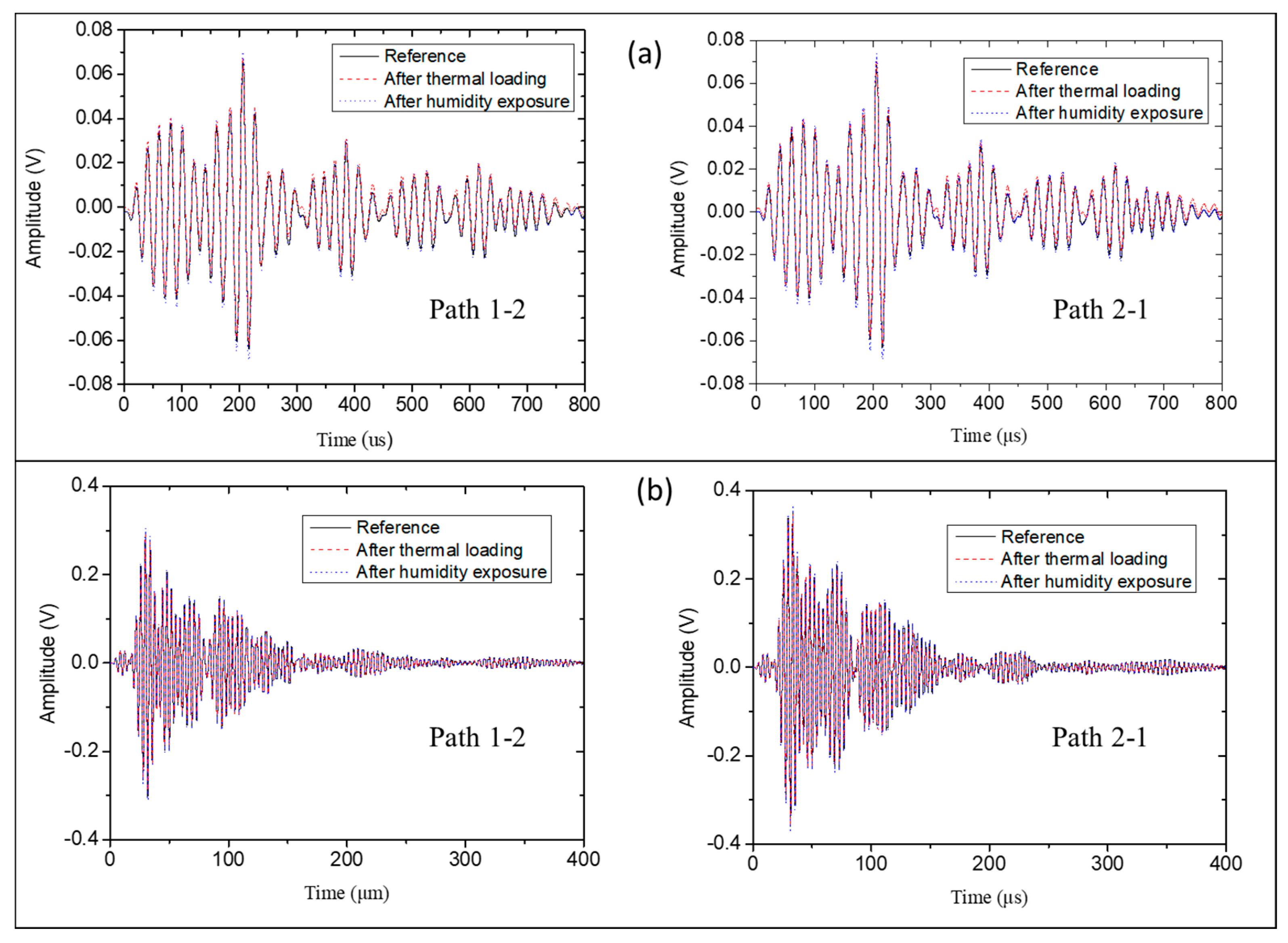
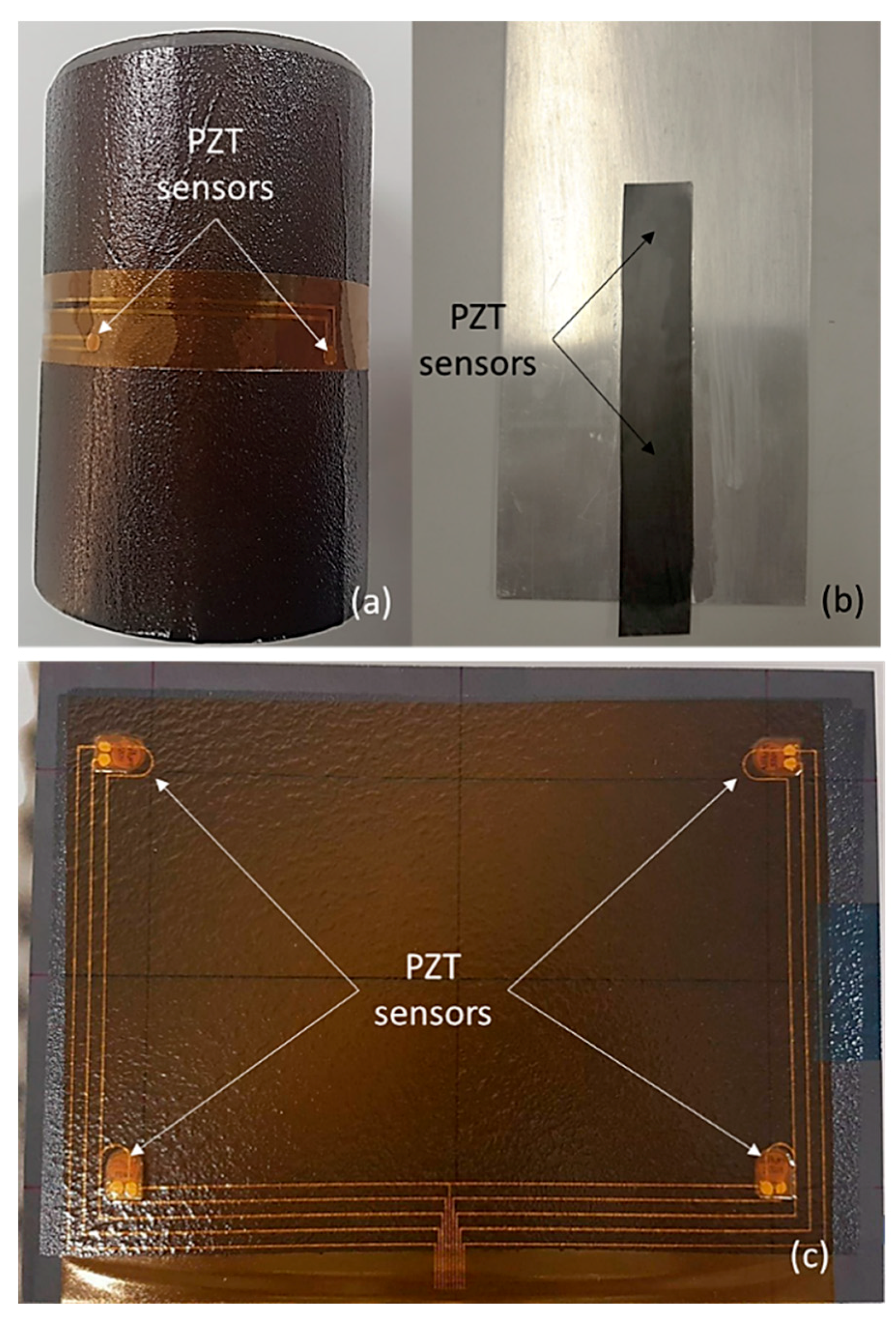
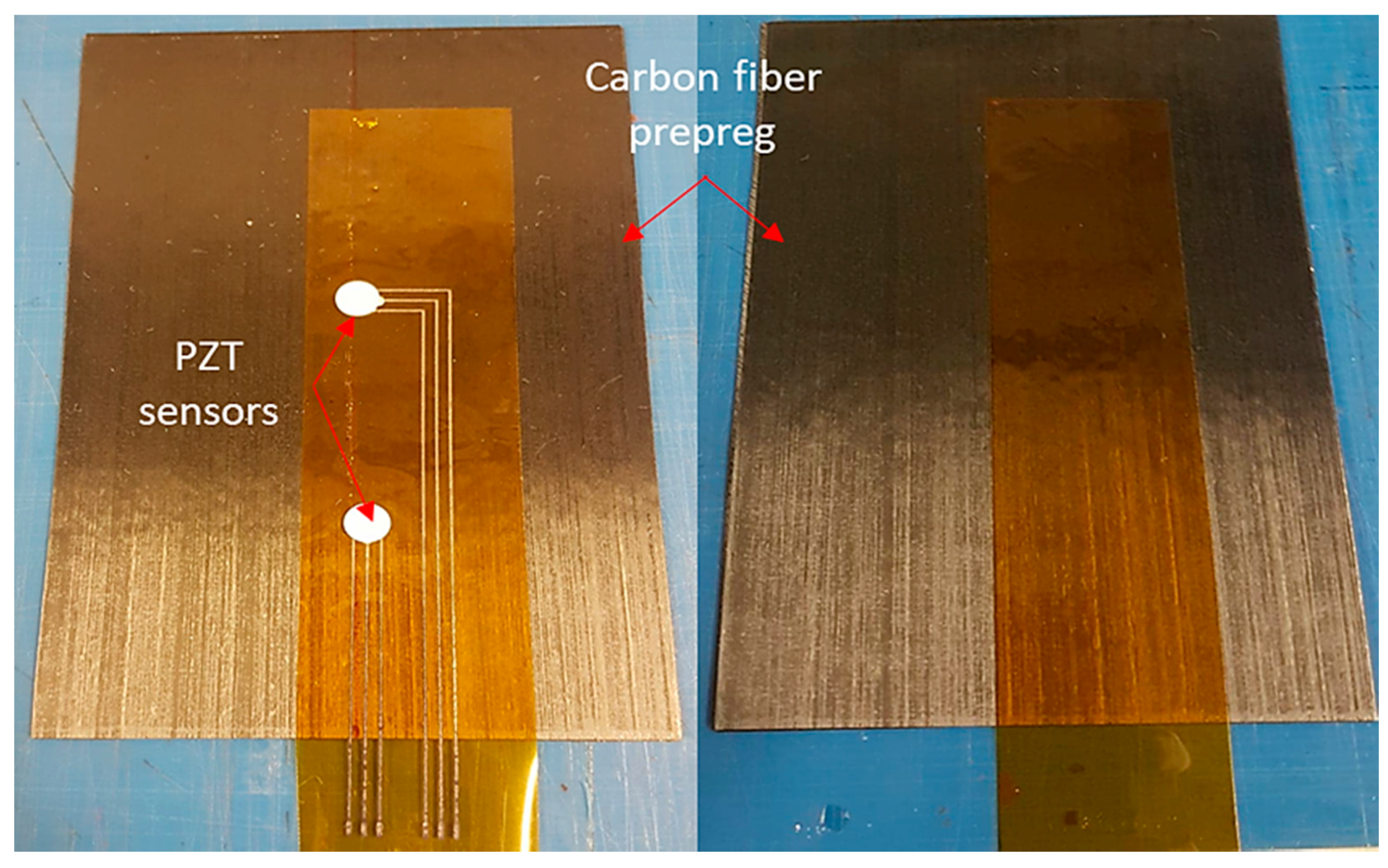
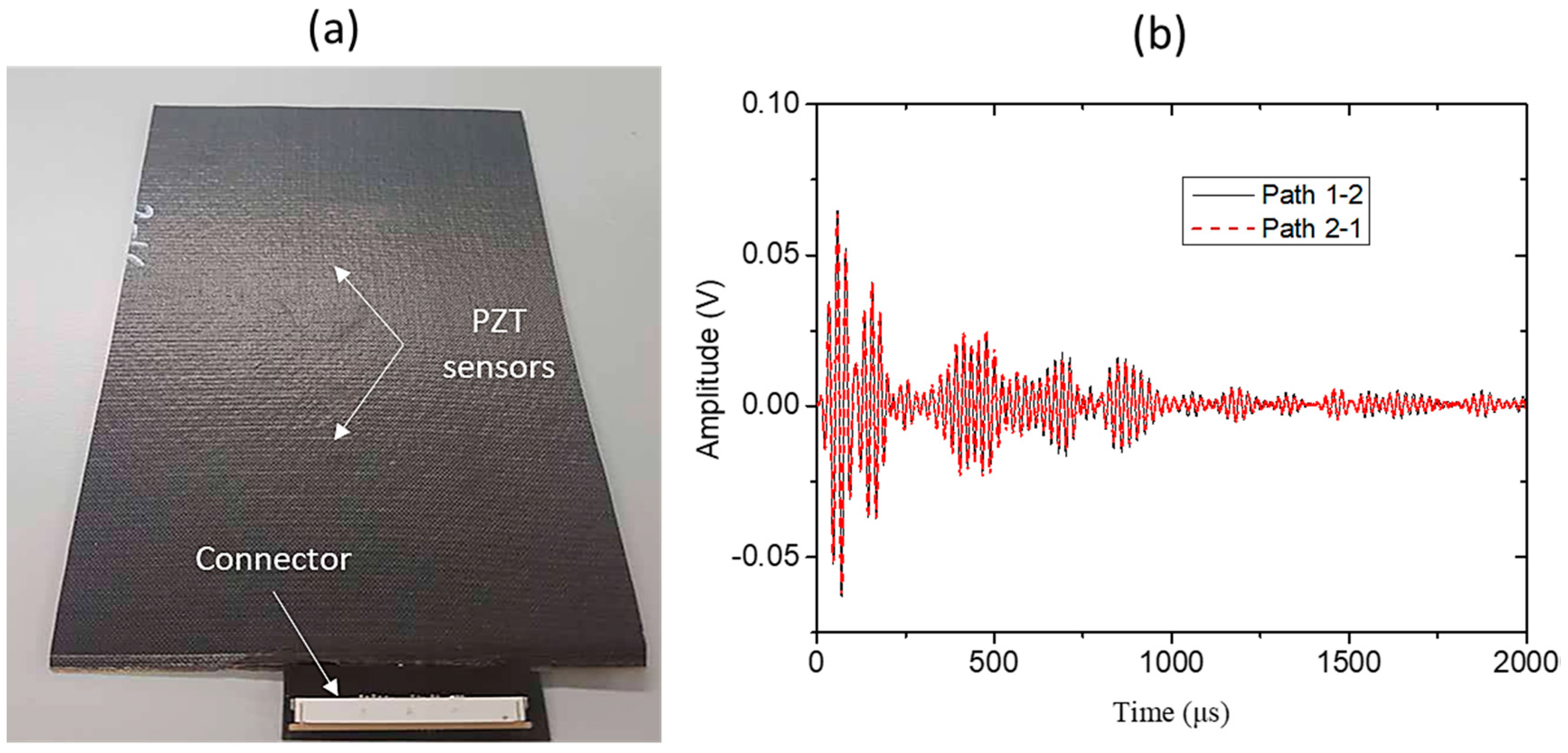
© 2018 by the authors. Licensee MDPI, Basel, Switzerland. This article is an open access article distributed under the terms and conditions of the Creative Commons Attribution (CC BY) license (http://creativecommons.org/licenses/by/4.0/).
Share and Cite
Bekas, D.G.; Sharif-Khodaei, Z.; Aliabadi, M.H.F. An Innovative Diagnostic Film for Structural Health Monitoring of Metallic and Composite Structures. Sensors 2018, 18, 2084. https://doi.org/10.3390/s18072084
Bekas DG, Sharif-Khodaei Z, Aliabadi MHF. An Innovative Diagnostic Film for Structural Health Monitoring of Metallic and Composite Structures. Sensors. 2018; 18(7):2084. https://doi.org/10.3390/s18072084
Chicago/Turabian StyleBekas, Dimitrios G., Zahra Sharif-Khodaei, and M.H. Ferri Aliabadi. 2018. "An Innovative Diagnostic Film for Structural Health Monitoring of Metallic and Composite Structures" Sensors 18, no. 7: 2084. https://doi.org/10.3390/s18072084




